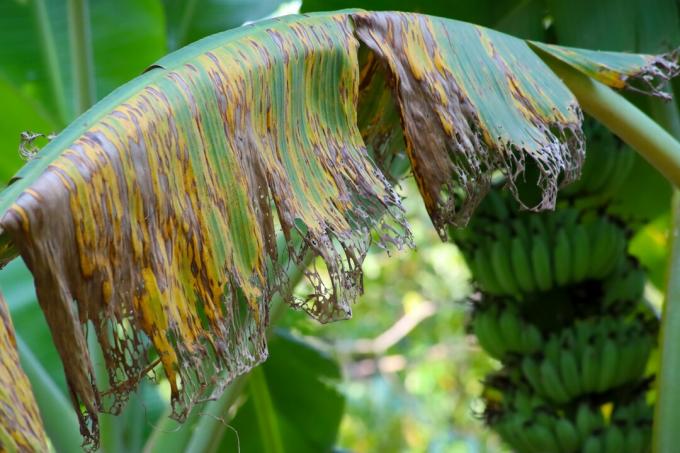The banana as we know it will probably no longer exist in a few years. We explain why the Cavendish banana is dying out.

Since approx. In 1950, almost exclusively a single, special type of banana was traded and distributed on the world markets. It replaced the banana variety "Gros Michel" (Engl. "Big Mike") after it was no longer profitable due to the worldwide spread of the fungal disease "Yellow Sikatoga" and "Panama Disease". The variety this is about is the Cavendish banana. In contrast to "Gros Michel", the Cavendish banana was more robust against the diseases mentioned above. In addition, despite a thinner and therefore more sensitive shell, due to its lower growth height, it offered the advantages of more dense plant tolerance and greater storm resistance. In fact, the banana is a berry, and while its perennials look like trees, it is one of the largest herbaceous plants in the world.
contents
- Origin and name
- Threat to the Cavendish banana
- Reproduction of the species
Origin and name
The name of the banana variety is derived from William Cavendish, 6th Duke of Devonshire, also known as the "Bachelor Duke". Born on May 21st, 1790 in Paris, he passed away on January 18th, 1858 in Hardwich Hall, Derbyshire. The namesake came from one of the richest English families and planted the first bananas in Europe around 1830 in his huge greenhouse, the "Great Conservatory".
Threat to the Cavendish banana
Today the Cavendish banana is due to a new strain of fungus (Mycosphaerella fijiensis) called "Black Sikatoga" or "Black leaf grain" itself endangered. It is believed that it will disappear from world markets in the next 10 years. After the apple, the banana is the most popular fruit among Germans and the most popular export fruit in the world. The huge market, with a trading volume of almost 7 billion euros, is essentially divided between only three companies: Chiquita, Dole and Del Monte. Of course, the threat of a loss of this market does not leave these companies indifferent.

Reproduction of the species
Since the Cavendish banana trees cannot be propagated by seed formation, but only "asexually" vegetatively by saplings, the plant cannot develop any resistance to pests. This would require the genetic mutations of sexual reproduction, i.e. through seeds. Companies are trying to counteract this risk through strict quarantines so as not to infect even more plants. Bringing a new type of banana onto the market, however, requires more properties than a high level of pest resistance. So it should also have good taste, be able to withstand damage-free transport over long distances and have its ripening process controlled industrially. Efforts to deal with the fungal attack with pesticides have largely failed. Attempts are therefore being made to develop a new, resistant variety of bananas through genetic engineering. Possibly also with the help of wild banana plants or locally limited cultivated forms from India or Southeast Asia.


